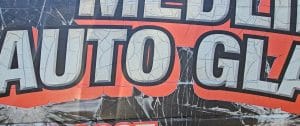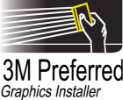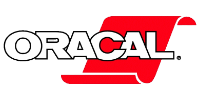The straightforward answer is often “no,” a properly installed and timely removed vehicle wrap will not damage a vehicle’s original factory paint. However, this seemingly simple truth is underpinned by a delicate balance of factors – the quality of the underlying paint, the wrap’s age, and the precision of its removal – each playing a surprising role in the outcome. At Capital Wraps, our two decades of experience have allowed us to witness this relationship firsthand, unveiling the nuances that dictate whether a wrap is a protector or, if mishandled, a potential detriment.
The Invisible Shield: How Wraps Protect
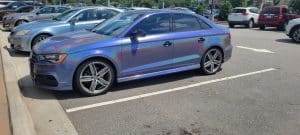
Consider the original factory paint on your vehicle. It’s a marvel of modern chemistry, baked on with precision and designed for durability. When a high-quality vinyl wrap is professionally applied to this surface, it acts as an almost invisible shield.
- UV Ray Protection: The sun, that relentless adversary, constantly bombards your car with UV rays, leading to fading and clear coat degradation. A wrap, like a specialized sunscreen, absorbs much of this punishment, leaving the original paint beneath vibrant and protected.
- Minor Abrasion Defense: Stone chips, road debris, bug splatters, bird droppings, and minor scratches are all daily hazards. The wrap bears the brunt of these impacts, safeguarding the underlying paint from superficial damage.
- Environmental Barrier: Tree sap, industrial fallout, and other environmental contaminants can etch into paint. The wrap provides a barrier, making these easier to clean off the vinyl surface without impacting the paint.
This protective quality is one of the often-unsung benefits of vehicle wraps, extending the life and preserving the finish of your asset.
The Unseen Fracture: When Paint Becomes Vulnerable

Here’s where the narrative shifts, revealing the crucial “if” in our initial answer. The interaction between a wrap and a vehicle’s surface is fundamentally dictated by the quality of the underlying paint.
- The Repainted Riddle: The most common culprit in wrap-related paint damage is not the wrap itself, but non-factory repainted areas. Factory paint is typically a robust, multi-layered system, baked on at high temperatures, creating an incredibly strong bond to the vehicle’s body. Aftermarket paint jobs, however, vary wildly in quality, adhesion, and curing. If a vehicle has undergone a repaint, especially a low-quality one, or if bodywork was done and not cured properly, the bond between that new paint and the vehicle (or the new paint’s layers) can be weaker than the bond of the wrap’s adhesive to the wrap itself. When the wrap is removed, it can, in essence, “pull” the poorly adhered paint off with it. This is a failure of the paint, not the wrap. It’s why we meticulously inspect vehicles and communicate these risks upfront.
The Tipping Point: The Dangers of Overstaying Your Welcome
Every story has its climax, and for vehicle wraps, it often arrives around the 4-year mark. This is a critical juncture where the delicate balance can tip.
-
Vinyl Degradation and Adhesion Hardening: High-quality vinyl films, like those from 3M, Avery Dennison, and Orafol (Oracal), are designed with sophisticated adhesives for strong yet removable bonds. However, prolonged exposure to UV radiation, extreme temperatures, and environmental pollutants causes two things to happen:
- Vinyl Becomes Brittle and Cracks: Especially on horizontal surfaces (hoods, roofs), which receive the most direct sun, the vinyl begins to degrade, losing its elasticity and becoming brittle. It starts to crack and break into smaller pieces rather than peeling off cleanly.
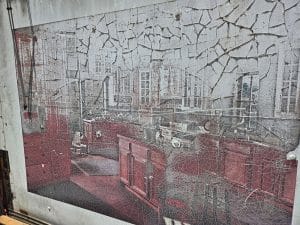
-
- Adhesive Hardens: Concurrently, the adhesive “sets up” more permanently, creating an increasingly aggressive bond with the underlying paint. It’s like chewing gum left on a sidewalk for years versus fresh gum – one comes off easily, the other is a stubborn mess.
-
The Recommended Removal Window: Industry analysis and our two decades of dedicated experience (and over 30,000 successful projects) consistently show that the optimal window for wrap removal is around 4 years. Removing a wrap within this timeframe significantly reduces the risk of adhesive residue, vinyl fragmentation, and, most importantly, potential paint damage. After this point, the removal process becomes exponentially more labor-intensive, often requiring stronger chemicals and specialized tools (like a decal grinder) that increase the risk to the paint and, consequently, the cost to the owner.
-
Visual Cues for Timely Removal: Don’t wait for the calendar alone. If you start to see cracks forming in the vinyl, especially on horizontal surfaces, it’s a clear signal that the wrap is nearing the end of its life and should be removed promptly to avoid complications.
Our Meticulous Process: Safeguarding Your Investment

At Capital Wraps, our process is designed not just for stunning application but for the longevity and ultimate preservation of your vehicle. Our certified installers are craftsmen with thousands of hours of hands-on experience, meticulously prepping surfaces and applying wraps to industry standards. We also provide clear guidance on proper care and, crucially, advocate for timely removal, ensuring your vehicle’s paint remains untouched. It’s this comprehensive approach, built on two decades in the field, that allows us to deliver unparalleled expertise and peace of mind.
Conclusion
While a vehicle wrap serves as an exceptional protective layer for your vehicle’s factory paint, its integrity is contingent on two key variables: the health of the paint beneath and the timeliness of its removal. Understanding these factors and adhering to recommended lifespans will ensure your wrap fulfills its promise – protecting your asset while delivering powerful, dynamic branding on the road.

